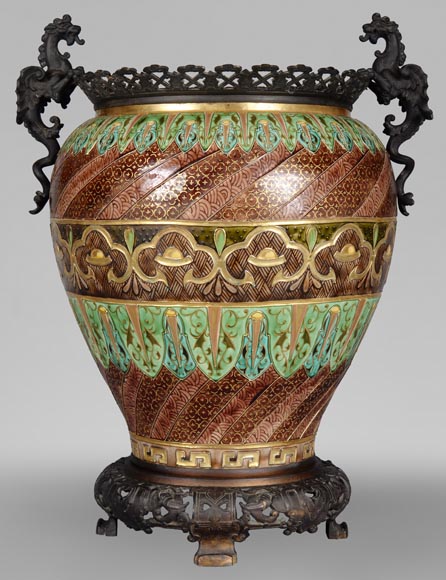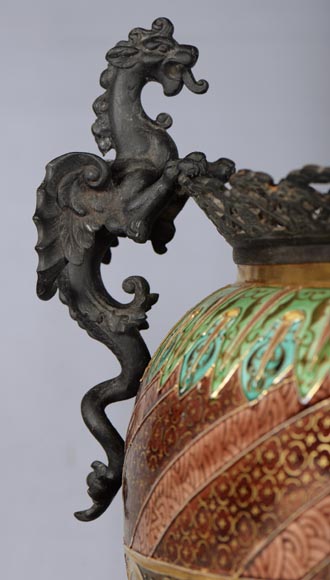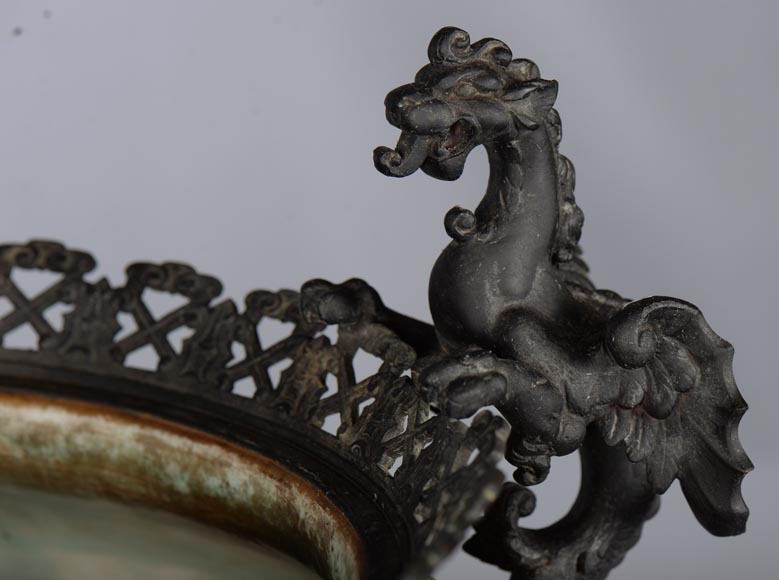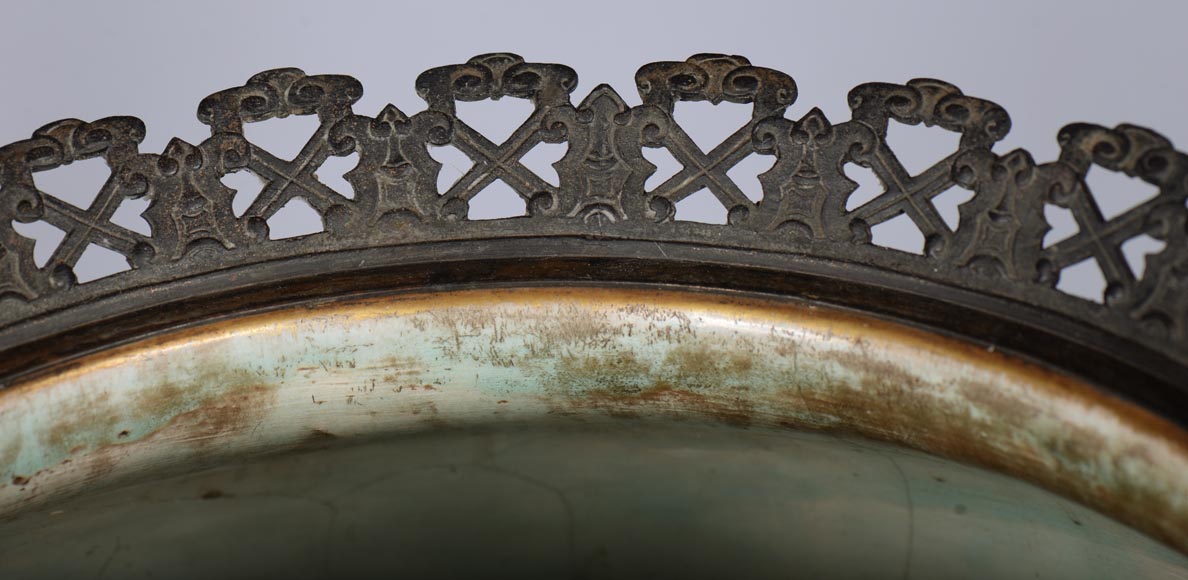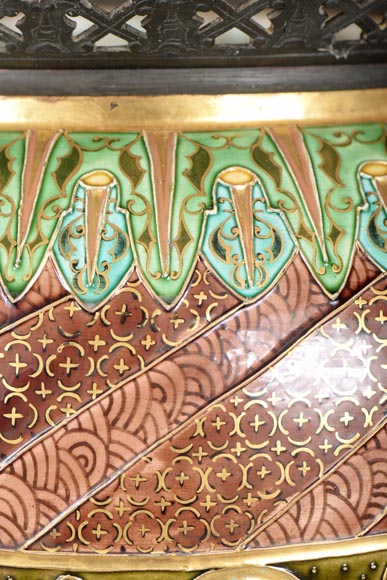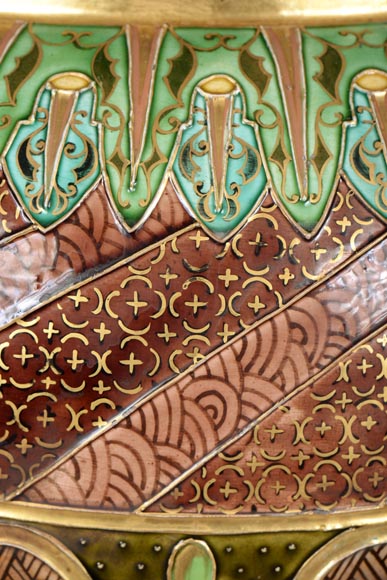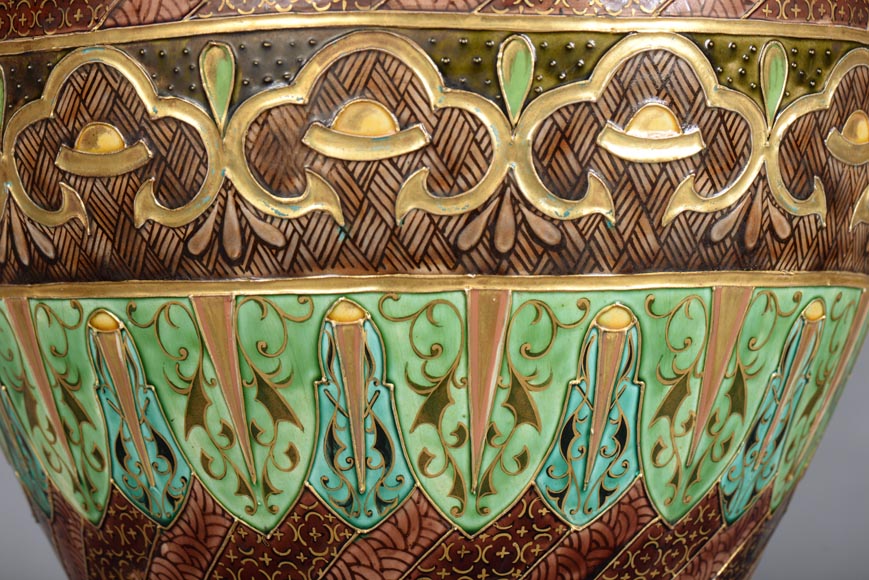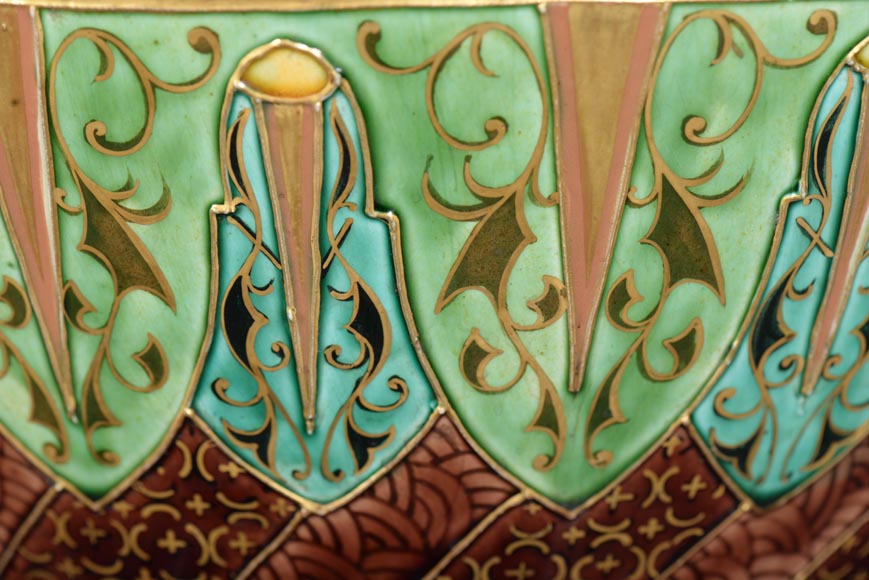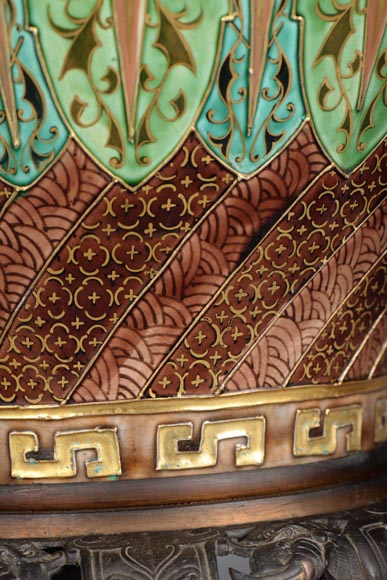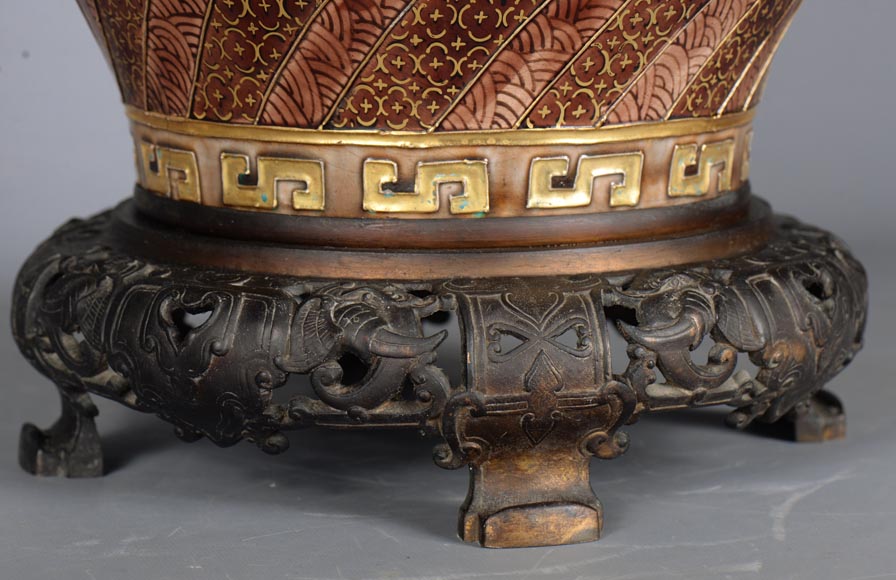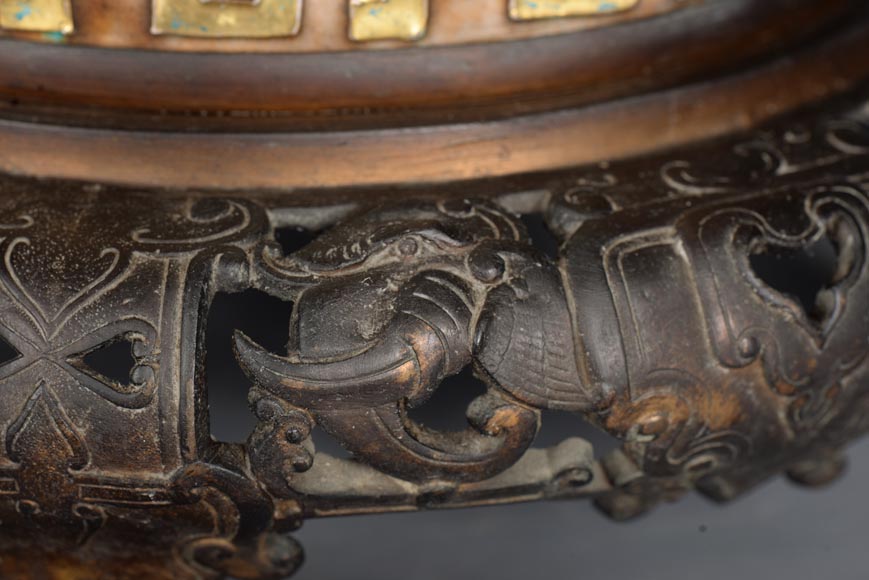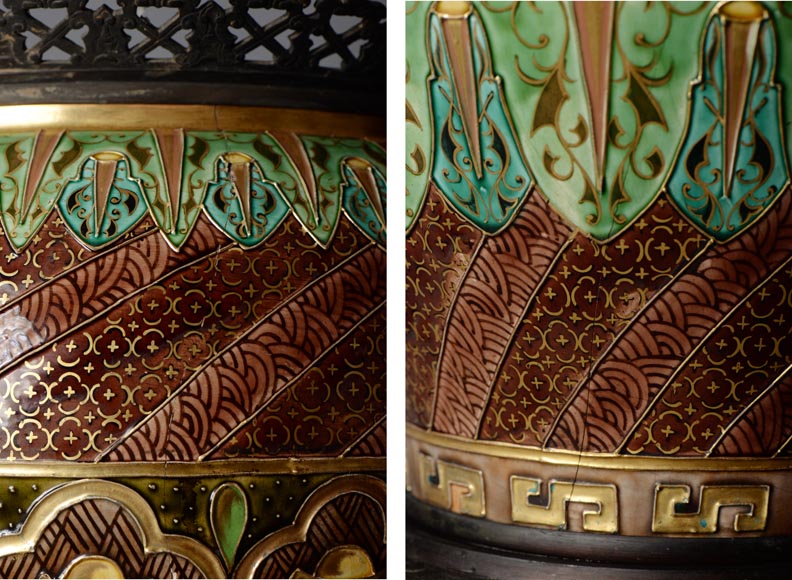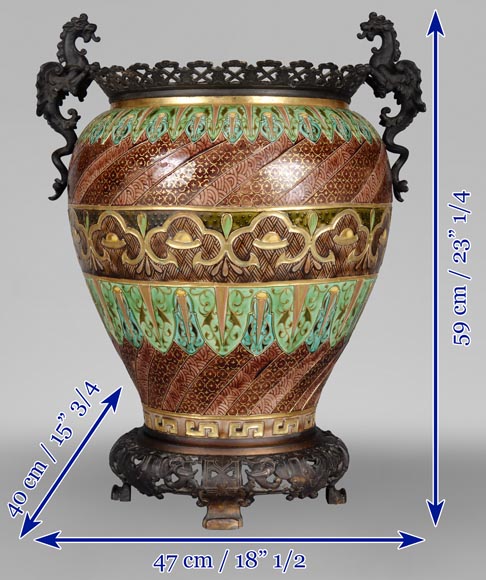Style Japonism, Chinoiserie / Ref.13638
Large vase with a bronze mount and dragons
Dimensions
Width 18'' ½ 47cm
Height 23'' ¼ 59cm
Depth: 15'' ¾ 40cm
Origin:
19th century.
Status:
Good condition. Two cracks.
This important enamelled ceramic Chinese vase with a patinated bronze mount has an enamelled decor on our vase was made in brown, red and green shades. Applied with friezes, we can recognize the influence of the Islam and Chinese arts through the succession of geometrical and flowery motifs. The patinated bronze foot and neck also depict an open work decor of which the drawn motif take their inspiration from the same sources. Finally, two small dragons, typical of the Chinese folklore, come to lighten up the mount by their presence.
Informations
Price: on request
Recommended for you :
Dimensions:
Width: 52
Depth: 52
Diameter: 52
Dimensions:
Width: 33
Height: 26
Dimensions:
Height: 9
Diameter: 32
Dimensions:
Height: 33
Diameter: 36
Dimensions:
Height: 4
Diameter: 30
Dimensions:
Height: 4
Diameter: 30
Dimensions:
Height: 26
Diameter: 36
Dimensions:
Width: 34
Height: 12
Depth: 34
Dimensions:
Width: 72
Height: 164
Depth: 11
Dimensions:
Height: 48
Diameter: 42
Dimensions:
Diameter: 24
Dimensions:
Diameter: 36



